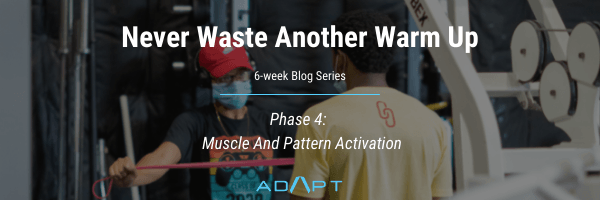We’ve covered targeting soft tissue in phase one, bi-phasic stretching in phase two and we discussed corrective exercises. Now we continue discussing how to properly warm-up for any physical activity venture.
Phase 4: Muscle And Pattern Activation
The goal of everything you’ve done so far is to open up a movement pattern or region into new ranges of motion. But any improvements in range of motion are useless—and potentially dangerous—without being able to stabilize that new range of motion. That’s where muscle and pattern activation comes into play.
Activation drills that actually produce results need to involve a high degree of mind-muscle connection, and even higher amounts of internal tension and force generation. In order to optimally “activate” a muscle, you need to be able to feel the muscle contract, then be able to carry over that feeling to a compound movement.
Again, this doesn’t need to be complicated. I like using robot dog/crawls for the upper body, and the often-butchered glute bridge for the lower body.
No matter what movement you choose, thinking about squeezing the active muscles as hard as possible, hardwiring the connections of muscles moving and stabilizing into a new range.
A common problem with this phase is lifters annihilate muscles rather than activating them. This leads to fatigue and a drop in your performance during the workout. Limit yourself to 2-3 sets of 5-10 reps of each movement, with 15-30 seconds between sets. This works out to 1-2 minutes of investment into priming your powerhouse muscles in better, more usable ranges of motion.
Yours for greater strength,
– Peter (Head of Personal Training at ADAPT)




